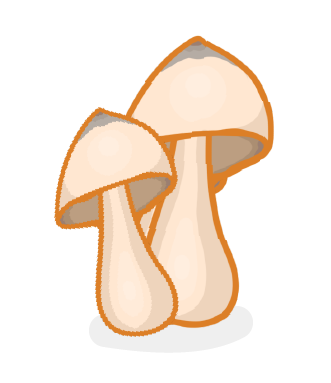Communicable Disease 4 - Protists and Fungi
This lesson covers:
- What 'fungi' and 'protoctists' are
- How they can cause disease
- Examples of fungi and protoctist diseases
Which of the following are eukaryotic organisms?
(Select all that apply)
Protoctists
Animals
Plants
Bacteria
Fungi
|

Are fungi unicellular, multicellular, or can they be either?
Always unicellular
Always multicellular
Can be either
|
Rose black spot
respiration / photosynthesis / bacterial / fungicides / fungal / red / black / wind
- Rose black spot is a disease that causes purple or spots develop on leaves, which then often turn yellow and drop off.
- This reduces and so also reduces the growth of the plant.
- It can be spread by water, or the .
- Treatment involves spraying the infected plants with , or destroying the affected leaves.
|
Protists are considered . This means that they live on, or in, a host organism, and get their food at the expense of their host.
|
Protists are often transported between hosts by other organisms. We call these other organisms:
Vectors
Pathogens
Commensals
|
Malaria
bacteria / protist / fatal / fevers / rashes / mosquitoes / leeches
- The organisms that cause malaria are a type of .
- They are transported between hosts by .
- The symptoms include recurrent and headaches, and in extreme cases it can be .
|
Suggest three ways we might try to reduce the spread of malaria.
|